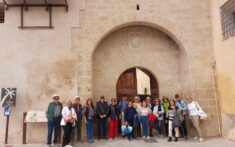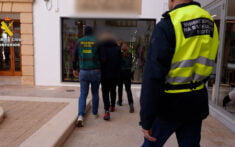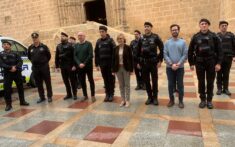The Hermitage of San Hermenegildo y San Martín is a modest hermitage southeast of Xàbia, in the area of Cabo de San Martín (Cap de Sant Martí). It is important to note that it is located on private land, although it is visible from the road outside.
Where is it and how to get there
Take the Portitxol road, and between kilometers 4 and 5, at a roundabout, turn right onto the so-called Guardia highway. In the plot that is formed in its first bifurcation, within a private plot, is the hermitage, in a landscaped and wooded area next to the fence of the farm, sticking to the road. The plot is very close to the El Tosalet urbanization, a densely populated area full of single-family homes.
History
Tradition tells us that the old San Martín Monastery was located in this area, which at the end of the XNUMXth century was the scene of the persecution by the Gothic king Leovigildo of his son Hermenegildo, converted to Catholicism. The king's troops stormed the monastery and the monks hid on a nearby island (which could be that of Portitxol). This theory is also supported by toponymy (the name of the places), since the Cape of San Martín is also very close, with the same name as the monastery. And the fact that the hermitage, as we know it now, is dedicated to San Hermenegildo. These may be indications that the story is true, but the truth is that there is no archaeological evidence of the existence of a monastery on the site of the hermitage.
The hermitage as such, dedicated to San Hermenegildo and San Martín, was built in 1773. It was originally public, but later passed into private hands (it belonged to the founders of the El Tosalet urbanization), and has remained that way to this day. Its state of conservation, as seen from the outside, is good.
Architecture
It is a very simple building with a rectangular floor plan with white masonry walls and a shallow double-sided tile roof. At the head, there is a small unit, possibly the sacristy. On this gable end (upper part of a triangular-shaped façade) stands the belfry that housed the bell, cast in 1953. But this bell was stolen and only the wooden yoke remains. The door is lined with rough stone ashlars, and at the top of the facade there is a small cross.









